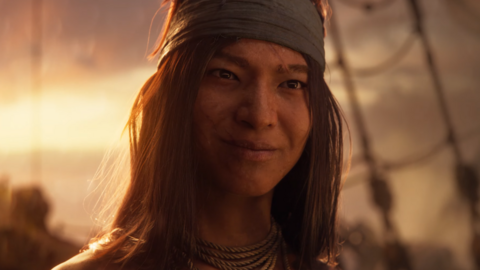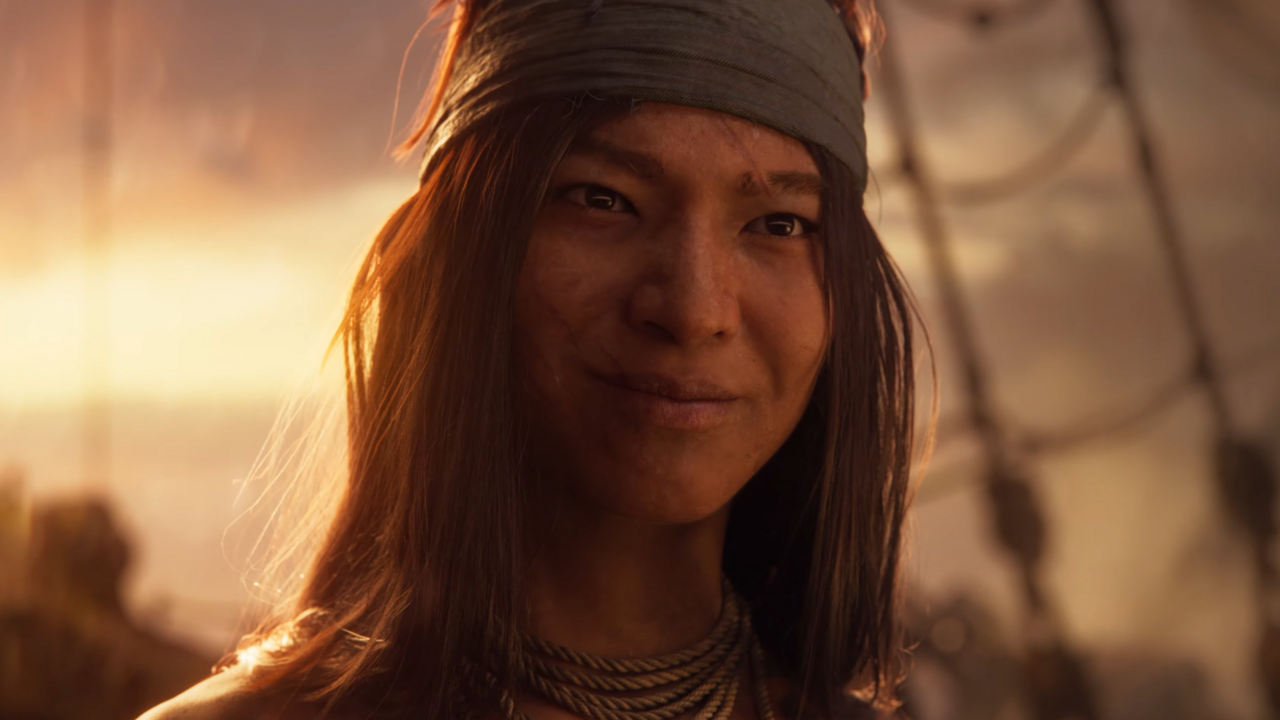
Beginning development in 2013, Skull and Bones, conceptually, was a spin-off of Assassin’s Creed IV: Black Flag, which launched that same year. Both are games where you play as a pirate and engage in naval warfare, improving your ship over time as you gather resources and unlock new crafting recipes. I hoped Skull and Bones would build and iterate on Black Flag–one of my favorite games–to be its own thing. Although naval combat was a pillar of Black Flag, it wasn’t the entire focus of an Assassin’s Creed game, so a game like Skull and Bones–built from the jump to be an entirely pirate-focused adventure at sea–could make some big swings with its deeper naval combat and presentation, free from the quasi-realistic world and the sneaking and stabbing focus of Assassin’s Creed. Having now had a chance to play Skull and Bones, however, that doesn’t seem to be the case. Based on my experience thus far, Skull and Bones isn’t doing enough to differentiate itself from Black Flag and, as a result, feels like playing a game I already experienced over a decade ago.
When it comes to enjoying Skull and Bones, I think your mileage may vary. Since 2013, we’ve seen more games that have built and improved upon Black Flag’s naval combat–heck, most of them are subsequent Assassin’s Creed games like Rogue and Odyssey. So, even if Black Flag had one of the best (and I’d argue it was the best) naval combat in a video game as of 2013, that’s not the case anymore in 2024. At the very least, Ubisoft’s version of naval combat is no longer novel. For me, it’s a little dated and stale and so, consequentially, Skull and Bones feels a little dated and stale.
There are new ideas in Skull and Bones, sure (Skull and Bones has much more ship customization than Black Flag did, for instance, that’s based on a color-tiered loot system akin to many recent live-service games), but the déjà vu of the experience is overwhelming and hits like whiplash. It regularly pulled me out of any sort of fun I happened to be having. It’s not just the gameplay either–the aesthetic of the experience can feel like it’s just been copied and pasted from Black Flag. For example, some of the sea shanties in Skull and Bones sound like the same ones from Black Flag. In the grand scheme of things, whether or not they’re new recordings isn’t a huge deal–Black Flag has good shanties and I like listening to them. But it’s the startling sum of details like this and other similarities–from the combat mechanics to visuals, and from the sound design to the gameplay loop–that make it feel like I was just playing Black Flag again. And I don’t want to just play Black Flag again.
If you do, however, then there may be some fun for you to salvage here. Each type of ship behaves differently enough to warrant strategic consideration in what you sail, and further customization options allow you to curate how your ship fights, like creating a specific build from an RPG’s starting class. You can be a damage-dealing warship that banks on a dime but can’t take a hit, for instance, or a stalwart behemoth armed with cannons that can heal allied ships and tank hits. There’s some cool variety in the types of builds you can create, and once you’re out on the open sea, there’s a colorful Indian Ocean to sail through and plenty of enemy ships and strongholds to blow up. In a world where Black Flag didn’t already exist and other pirate games like Sea of Thieves weren’t already killing it at delivering that pirate fantasy, Skull and Bones might stand out. As is, however, it feels like it’s treading water in the shadow of giants.
Skull and Bones Full Presentation | Ubisoft Foward
Please use a html5 video capable browser to watch videos.
This video has an invalid file format.
Sorry, but you can’t access this content!
Please enter your date of birth to view this video
By clicking ‘enter’, you agree to GameSpot’s
Terms of Use and Privacy Policy
I didn’t play any of the main storyline in my preview, so I didn’t see what it’s like to start out as the survivor of a shipwreck and work your way up to being a respected pirate captain. Instead, I jumped in at Skull and Bones’ endgame, already in charge of a fleet of ships that were each armed with a variety of weaponry. Developer Ubisoft Singapore provided an outline of the first four seasons of post-launch content during the preview, and then had me play through some of the events that will be available in Season 1: Raging Tides, in which a legendary poison-spewing pirate lord invades the Indian Ocean, creating new limited-time event opportunities.
I first tried a Hostile Takeover, in which two other players and I had to combat waves of enemy ships and each other while members of our respective crews invaded nearby settlements and keeps in order to loot their treasure. Afterward, my group completed a Legendary Heist, in which players race to sink a treasure ship before it reaches its destination, loot the cargo, and steal away before anyone else can retaliate. We then completed a few larger, six-player activities–in the first, we hunted down a dangerous sea creature by shooting at it with our cannons during the brief moments it surfaced, and in the second we fought a legendary pirate lord who would escape if we didn’t blow up his ship in an allotted time.
Boiled down, every event is built on the same bones: Outfit your ship as best you can and then shoot the enemy until they sink. Hostile Takeovers and Legendary Heists have the interesting wrinkle of PvP elements, but I’m not convinced they’re enough to give Skull and Bones the longevity to make it through a season of post-launch content, let alone four (though, presumably, Skull and Bones would be getting more types of activities in subsequent seasons, like other live-service games).
Skull and Bones: PC Features Trailer
Please use a html5 video capable browser to watch videos.
This video has an invalid file format.
Sorry, but you can’t access this content!
Please enter your date of birth to view this video
By clicking ‘enter’, you agree to GameSpot’s
Terms of Use and Privacy Policy
The Black Flag comparisons do not do Skull and Bones any favors, because they reminded me of how these events are merely imitations of activities from that game. Black Flag gave us strongholds and legendary pirate captains to attack, as well as treasure ships to steal from and dangerous beasts to hunt. The major difference is that Black Flag allowed you to leave the helm of your ship in many of these side quests, providing moments where you leap to the deck of an enemy ship and cross swords with several foes, run through a fort you’ve weakened to take out the stragglers, tensely face off against terrifying sea creatures with nothing more than your wits and a limited number of spears, and experience the incredible human stories of pirate legends.
Maybe Skull and Bones has moments like that in its main storyline–I wouldn’t know as I haven’t played it. But at the very least, they aren’t in the endgame, meaning there’s nothing to break up the monotony of the loop of outfitting your ship, sailing out, shooting a bunch of cannonballs, returning to port, and repeating. Perhaps the goals of these activities are different but the methods in which you achieve them are the same, and so by the end of my three-hour preview, the experience was beginning to drag. It shouldn’t be the goal to make every game into an experience that lasts forever, but if Ubisoft Singapore wants Skull and Bones to go on for at least four seasons, it needs to shake up its formula a bit more, if only to break away from unflattering comparisons to a game that’s almost 11 years old.

